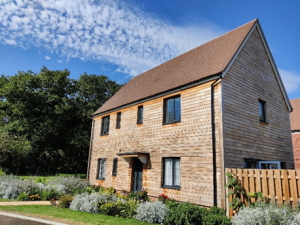T: 01822 851370 E: [email protected]
Visit RSN Survey about life in rural England to find out more.
What is English Rural Doing to Tackle Climate Change?

 Ahead of the 26th annual COP26 Summit in Glasgow, where the UN brings together almost every country on earth to reach agreement on how to tackle climate change, we wanted to spotlight some of the initiatives that English Rural is taking to play our part in tackling climate change and protecting the local environment:
Ahead of the 26th annual COP26 Summit in Glasgow, where the UN brings together almost every country on earth to reach agreement on how to tackle climate change, we wanted to spotlight some of the initiatives that English Rural is taking to play our part in tackling climate change and protecting the local environment:
Back in 2013, English Rural embarked on an extensive retrofit programme, designed to bring some of our older homes up to date with more energy-efficient and cost-saving heating systems, in addition to upgrading insulation levels and installing energy efficient windows and doors. You can read a case-study here about how one of our residents saved 40% on her annual fuel bills and how new heating technologies such as Air Source Heat Pumps (ASHPs). These units, which can be up to 400% more efficient (and will even extract heat from the outside air in the middle of winter), can reduce related CO2 emissions by up to 70%.
We’re proud to say that our retrofit programme has so far reduced our carbon footprint by over 150 metric tonnes per year.
All our homes are designed with ‘fabric-first’ principles. A ‘fabric first’ approach to building design involves maximising the performance of the components and materials that make up the building fabric itself, before considering the use of mechanical or electrical systems. This helps to reduce capital and operational costs, improve energy efficiency, and reduce carbon emissions whilst reducing ongoing maintenance costs. The idea behind fabric first is to provide the basics of a well-insulated and robust structure before adding in technology to improve EPC ratings. You can think of it as ‘fit and forget’, as insulation products require no maintenance. Our required EPC rating of ‘B-85’ will often result in improved levels of insulation in the ground floors, external walls and roof that creates a well-insulated envelope. The levels of insulation provided is often well above the requirements to achieve Building Regulations compliance.
 Buildings designed and constructed using a fabric first approach aim to minimise the need for energy consumption through methods such as:
Buildings designed and constructed using a fabric first approach aim to minimise the need for energy consumption through methods such as:
- Maximising airtightness
- Increased levels of insulation
- Optimising solar gain through the provision of openings and shading
- Optimising natural ventilation
- Using the thermal mass of the building fabric
- Using renewable processes and materials wherever possible
The UK Government has set a target for the country to generate net zero carbon emissions by 2050. A new report by Rural England CIC, containing a case-study by English Rural, considers how this is likely to be delivered by rural economies – and the benefits that it could create. The main focus is the consideration of power generation, transport, and heating for buildings. You can read the report here.
Most Local Authorities are now requiring Electric Vehicle Charge Points (EVCPs) in new build homes and English Rural aim to provide these wherever we can.
We also work with qualified Ecologists to identify existing flora and fauna, minimise habitat loss and look at how we can achieve a net gain in biodiversity. This may be via reinforcing existing native species hedges with new trees or planting new habitats and providing bird and bat boxes to encourage roosting.
These extensive ecological surveys identify the habitats and/or species that exist within an area at the time of the survey. Undertaking ecological surveys ensures that:
- We are aware of any ecological constraints at an early stage
- The development can be designed to minimise impacts on biodiversity
- Any legally protected species will be identified so that the development can avoid or minimise impacts on them
- The design of mitigation and enhancement measures will be appropriate to the site and surrounding area
- The local planning authority can consider all the relevant material considerations whilst determining an application
Additionally, we provide sustainable drainage systems to prevent flooding downstream and retain surface water on the site – examples include soakaways, rainwater butts and permeable paving. All our homes are provided with a rotary linen line to discourage tumble drier use and good-sized gardens to attract wildlife.
Away from the building site, English Rural is also reducing its carbon footprint by embracing more efficient remote working practices. Whether this is online collaboration, increased use of video calling, virtual site meetings, or our new digital consultation platform, we have consequently reduced our overall transport usage and fuel costs among our staff, board, and partners. If we don’t need to use a car, a plane or public transport – we won’t. Since embracing more ‘digital first‘ approaches, we are also using much less paper and stationery products, again reducing the overall negative impact we are having on the environment.
Like many organisations, we know there is much more to do. But we are committed to reducing our overall carbon footprint by changing the way we build and maintain our homes and in the way we operate as an organisation now and in the years to come.



